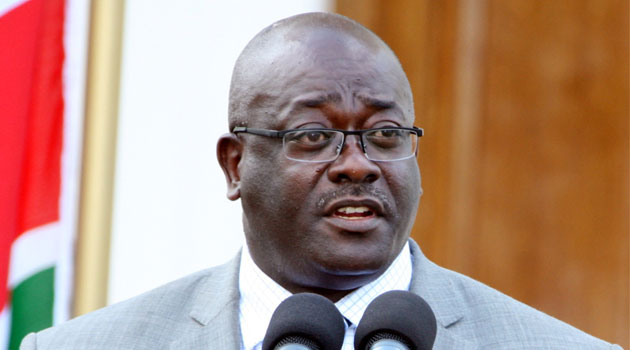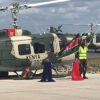
Officials stand among some of the travellers that were killed during a stampede/AFP
Dozens more were injured in the crush at a train station on Sunday evening at Allahabad, marking a tragic end to the most auspicious day of the 55-day Hindu festival in the state of Uttar Pradesh which had drawn some 30 million people.
Local officials said the railings on a bridge at the station had given way under the pressure of the mass of people, while witnesses said police had baton-charged the crowd and triggered panic.
After the state government ordered an investigation into the tragedy, one of the driving forces behind the festival said he was resigning as a matter of honour.
“I have resigned as the chairman of the festival committee,” said Mohammad Azam Khan, who is also a cabinet minister in the state.
“Although the stampede happened beyond the scope of my jurisdiction, I am deeply disturbed and step down on moral grounds,” he told AFP.
While the federal government insisted that the tragedy was due to the sheer numbers attending the world’s biggest gathering, witnesses also faulted heavy-handed police.
“I saw the police pushing the crowd and they were using the baton and beating the pilgrims. Medical help did not arrive for nearly two hours,” Abhijit Das, a 29-year-old pilgrim from West Bengal who was at the station, told AFP.
There was also criticism of the response to the disaster, with relatives recounting how the emergency services took hours to reach the scene. At least 10 corpses wrapped in white sheets could be seen on a platform several hours later.
Among the victims was an eight-year-old girl called Muskaan whose distraught parents said she had died while waiting nearly two hours for help.
“Our daughter still had a pulse. Had the doctors reached in time she would have been saved, but she died before our eyes,” Bedi Lal, the child’s father, told the NDTV news channel.
Apart from Muskaan, the victims included 26 women and nine men.
Hindus believe a dip in the sacred waters of the River Ganges cleanses them of their sins. This year’s Mela is enormous even by previous standards, with astrologers saying a planetary alignment seen once every 147 years made it particularly auspicious.
Police had been stretched in controlling the vast crowds as they reached their peak on Sunday, with officials saying the numbers had passed the 30 million mark by the evening.
A spokesman for the state government said the crush began after joints broke on railings attached to the bridge. Railways Minister Pawan Kumar Bansal attributed the accident to the sheer weight of numbers.
“There have been difficulties because a lot of people arrived over many days but tried to leave on one day,” Bansal told reporters in the city.
“As far as fixing responsibility is concerned… how can I say who is responsible before the inquiry is completed?”
The Kumbh Mela, which began last month and ends in March, takes place every 12 years in Allahabad while smaller events are held every three years in other locations around India.
In 2003 45 people died in a stampede during the festival in the western town of Nasik.
Crushes are a constant menace at religious events in India. The worst recent incident was in October 2008 when around 220 people died near a temple inside a famous fort in the northern city of Jodhpur.
At the Kumbh Mela on Sunday 30,000 volunteers and 7,000 police were on duty, urging pilgrims to take one short bath and then leave the waters to make space for the flow of humanity that stretched for kilometres.
The event has its origins in Hindu mythology, which describes how a few drops of the nectar of immortality fell on the four places that host the festival — Allahabad, Nasik, Ujjain and Haridwar.










































